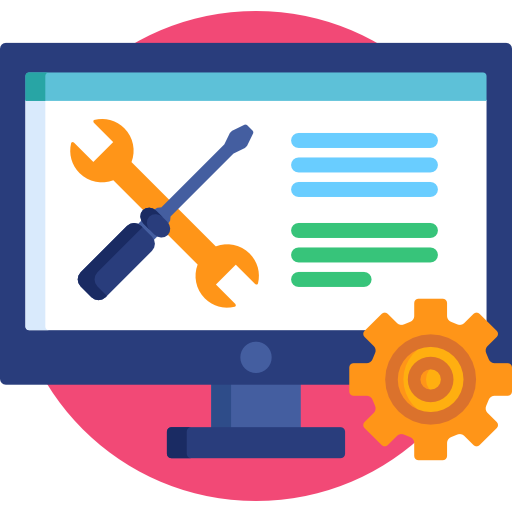Technical SEO Checklist.
The Complete SEO Checklist
As a result, keeping up with all the latest updates can be challenging for even the most seasoned digital marketers. That’s why we have compiled this technical website SEO checklist to make things easier for you.
Whether you’re just getting started with SEO or looking to refresh your knowledge, this article covers all the basics in-depth and an insightful collection of tools and resources that will help you stay on top of the latest updates in search engine optimization checklist.
The SEO checklist is super useful
In short, SEO is the gateway to online customers. Why, then, does SEO rank so low on the list of essential marketing activities? It’s because SEO is a highly technical process that’s easy to mess up. If you don’t follow best practices, your website will be shut out from search engine result pages (SERPs). And that’s the last thing any business wants.
SEO Checklist for your Website

Technical SEO Checklist
This part of the technical SEO checklist covers the basic building blocks of SEO. It’s the foundation that everything else is built on. Make sure to nail this section before moving on to the higher-level strategies.
- Keyword research - The foundation of all SEO efforts. Before you can optimize anything, you need to know what your target audience is searching for.
- Create a content strategy - Great content is essential for rankings, but it’s also necessary for driving traffic. Get it right and you’ll have a consistent source of leads for years to come.
- Links - Links are still one of the most important ranking factors. You can gain them by guest posting and link building, but you must be careful to do it ethically.
- Mobile-friendliness - More people are accessing the internet through their mobile devices than ever before, so keeping your site mobile-friendly is a must.
- Security - Google has a strict malware policy. If you’re infected, you will be kicked off the SERPs. Keep your site clean by using reliable hosting and keeping all software up-to-date.
- HTTPS - Google’s efforts to improve user security extend to their communication with websites.

On-Page SEO Checklist
This part of the on page SEO checklist is all about optimizing individual pieces of content. It covers elements such as length, keywords, and internal linking. You should also take a look at your anchor text if you’re targeting long-tail keywords.
- Content length - Longer content tends to rank higher in SERPs, but only if it’s valuable to your audience.
- Headings - Heading tags are essential for guiding readers through your content. They’re also valuable for SEO.
- Keyword research - If you’re targeting long-tail keywords, be careful not to stuff your content full of irrelevant terms. Otherwise, you’ll get slapped with a penalty.
- Internal linking - Make it easy for readers to navigate your site by using internal links. This increases your chances of being featured in Google’s site links.

Off-Page SEO Audit
This off site SEO checklist deals with elements outside of your control. They’re important to your rankings, but you can’t do anything to directly affect them.
- Domain authority - The backlinks to your website are one of the biggest ranking factors. They’re also one of the easiest to improve thanks to tools like Majestic.
- Social shares - You can add an artificial boost to your domain authority by purchasing social shares. Just make sure you’re boosting the right link.
- Authority of linking pages - A link from a high-authority website can do wonders for your rankings. That’s why guest posting is still one of the best ways to build links.

SEO Redesign Checklist
If you’re redesigning your website to a new website, you’ll need to follow all of the above. You’ll also need to make sure you keep your website redesign SEO checklist up to date throughout the redesign process. There are a few things to keep in mind, though.
- Make a content inventory - This will help you prioritize your efforts as you’re converting your old content into new pages.
- Keep your URLs short - Long, complicated URLs can be a pain to remember and link to, so keep them short and memorable.
- Keep your site structure the same - Google knows when you’ve changed your design, so you must be careful not to lose your rankings. Keep your site structure the same by linking your new content to your old pages.

Website Migration Checklist
If you’re migrating your site from one domain to another, you’ll need to be extra careful. There are several site migration checklist SEO to check:
- Keep your old site online - You want Google to keep crawling your old site while you finish migrating your content to the new one.
- Maintain your authority - You want to avoid the trap of building up a new domain while your old domain is down.
- Keep your links - Make sure you’re not losing any of your valuable backlinks while you’re migrating.
- Keep your social shares - Make sure your new site isn’t getting social shares while your old site is still online.
- Keep your ranking - If everything goes well, you should be able to keep your rankings after you’ve migrated.
SEO Checklist for Startups Page
If you’re just getting started in the digital marketing space, the technical SEO checklist for startups page will get you on the right path. There are several parts of the SEO optimization checklist that you might not have thought about.
- Choose your domain - Your domain is your name in the digital world. Make sure it’s memorable and consistent across all of your properties.
- Choose a hosting provider - The hosting provider you use can make a big difference in how your site performs. Avoid hosting nightmares by choosing a reputable provider.
- Use an SSL certificate - Google has recently started ranking secure websites higher in their search engine. An SSL certificate is the easiest way to make your site secure.
- Create high-quality content - If you want to rank well in the search engine results pages, you need to have high-quality content. Make sure you’re always following the latest SEO trends.
Get a free consultation
How to use SEO Checklist?
Apart from that, an SEO checklist is also great if you want to perform a technical SEO audit checklist for your clients. Make sure to check all the elements on the technical SEO checklist and you’ll be well on your way to a successful SEO campaign.
Get The SEO Checklist Now
Ready to Rank in TOP of Google search?

